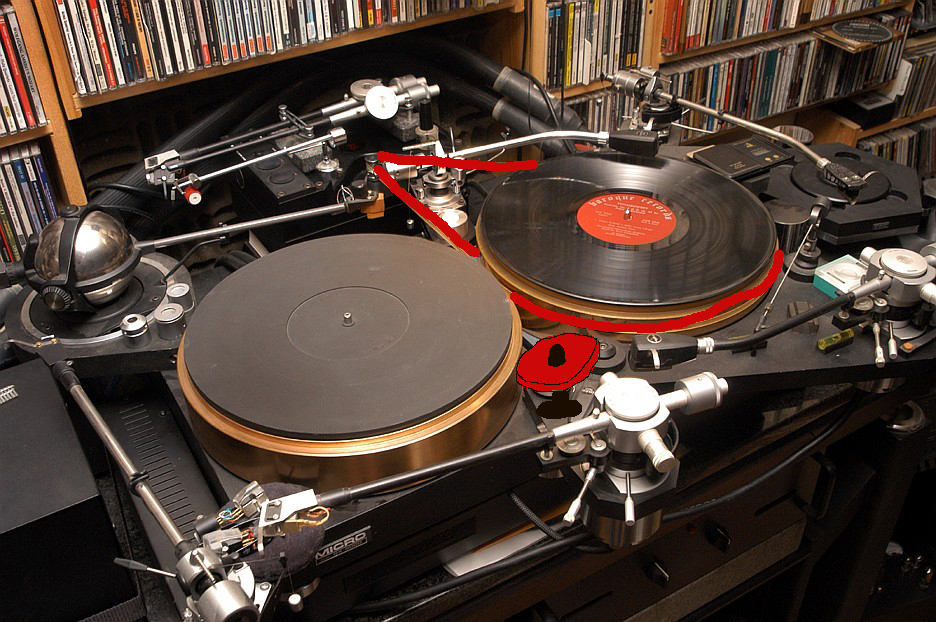|
I do not know if I agree, or take seriously belt creeping. Belt creeping is applicable for the systems where the speed or tension a variable. However, in the case of TT, where the speed and tension are constant the amount of belt creep is constant also. If so, then the belt creep as well as the belt slip are all equalized and “included” after a platter have reached its cruse speed. Not to mention that in context of platters large mass I think all contribution of all belt related issues become negligible. I think people build those theories about slipping and creping for defend type of transmissions – like power transmissions. In TT it would be a typical relatively-powerful motor driving some kind of 3 pounds acrylic platter. In this setting the torch on the motor is co-measurable with the torch of platter. However, if you have a very low torch motor and large mass platter then, I think, all bets off. I kind of always with irony look at the turntables when you turn motor on and the platter practically instantaneously hits 33prm. To me it is an indication that platter-motor coupling is wrong. I think the only “correct” coupling is possible if a motor and the belt can not drive the platter. You should turn motor and the platter should stay still. Then you push the platter with your hands and only then the motor and belt can stabilize it at 33rpm…
BTW, in largest Micro Seiki turntables are made exactly like this – motor could not start platter. However they resolved the problem, making it friendly, with very elegant solution. When you turn the “largest” Micro motors they begin to speed very violently with 10-20 times more speed then necessary. Usually it’s enough to give to a platter the initial “kick”. Then the Micro’s torch-sensor comes to play and it detects what contra-force the motor experience. if it detects that the platter is spinning with near-necessary speed then it drops torch monitoring, stabilize low voltage in motor and let it be. On my motor the voltage of the initial “kick” is 15V and the voltage of the “cruse” operation is about 4-5V. I think it is very elegant and very friendly solution. I never push my platter with hands…
Anyhow, another thing that I’m contemplating now in order to make both of my platters spinning is to drive one with belt and to drive another via an idler wheel. I think if I find a large enough, soft enough idler wheeland mount it on a proper arm then it might be an interesting to try. Now I need to find in garbage some kind Studer A810 and pull out of it the idler wheel arm assembly… :-) Here is how I visualize it…

The Cat
"I wish I could score everything for horns." - Richard Wagner. "Our writing equipment takes part in the forming of our thoughts." - Friedrich Nietzsche
|